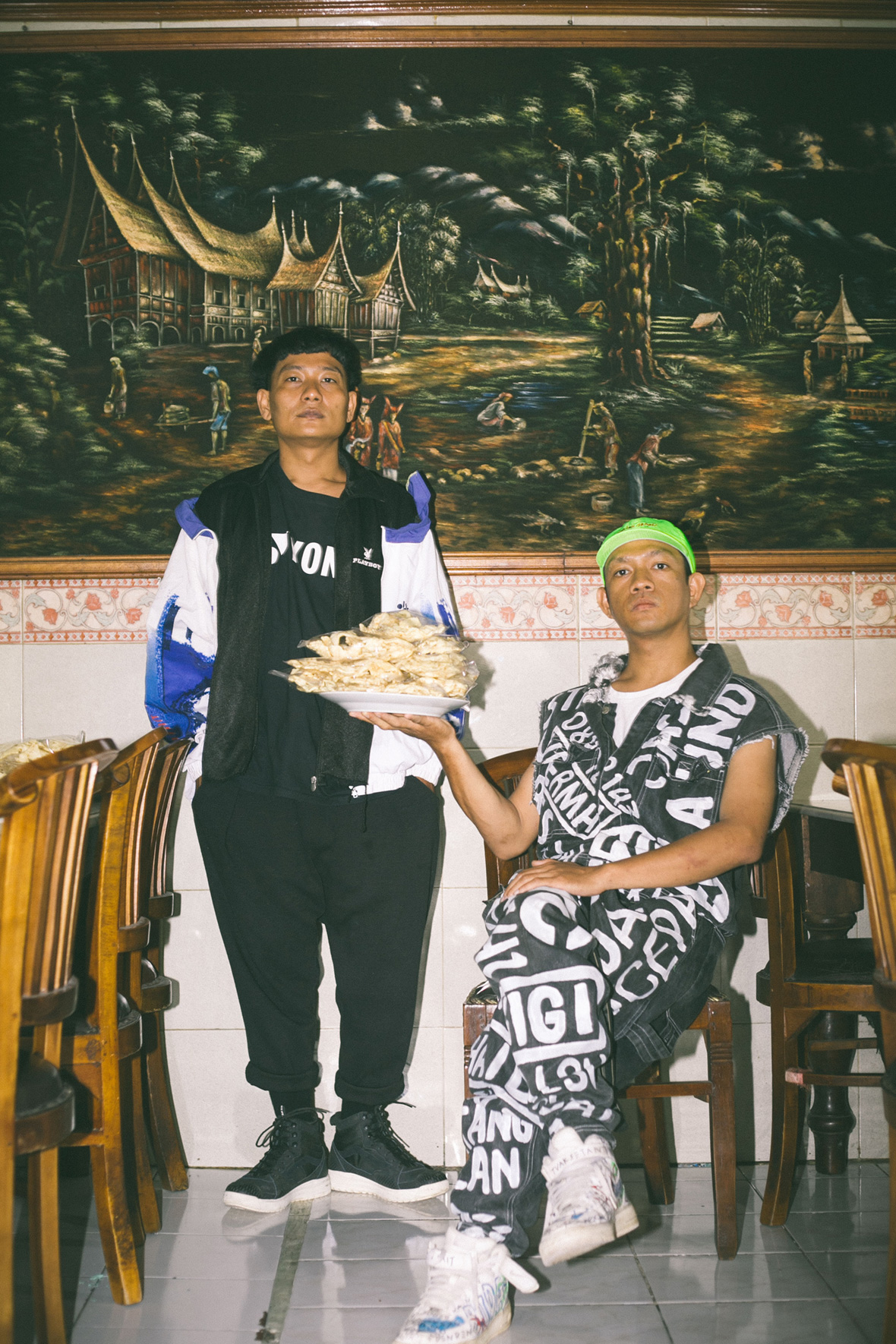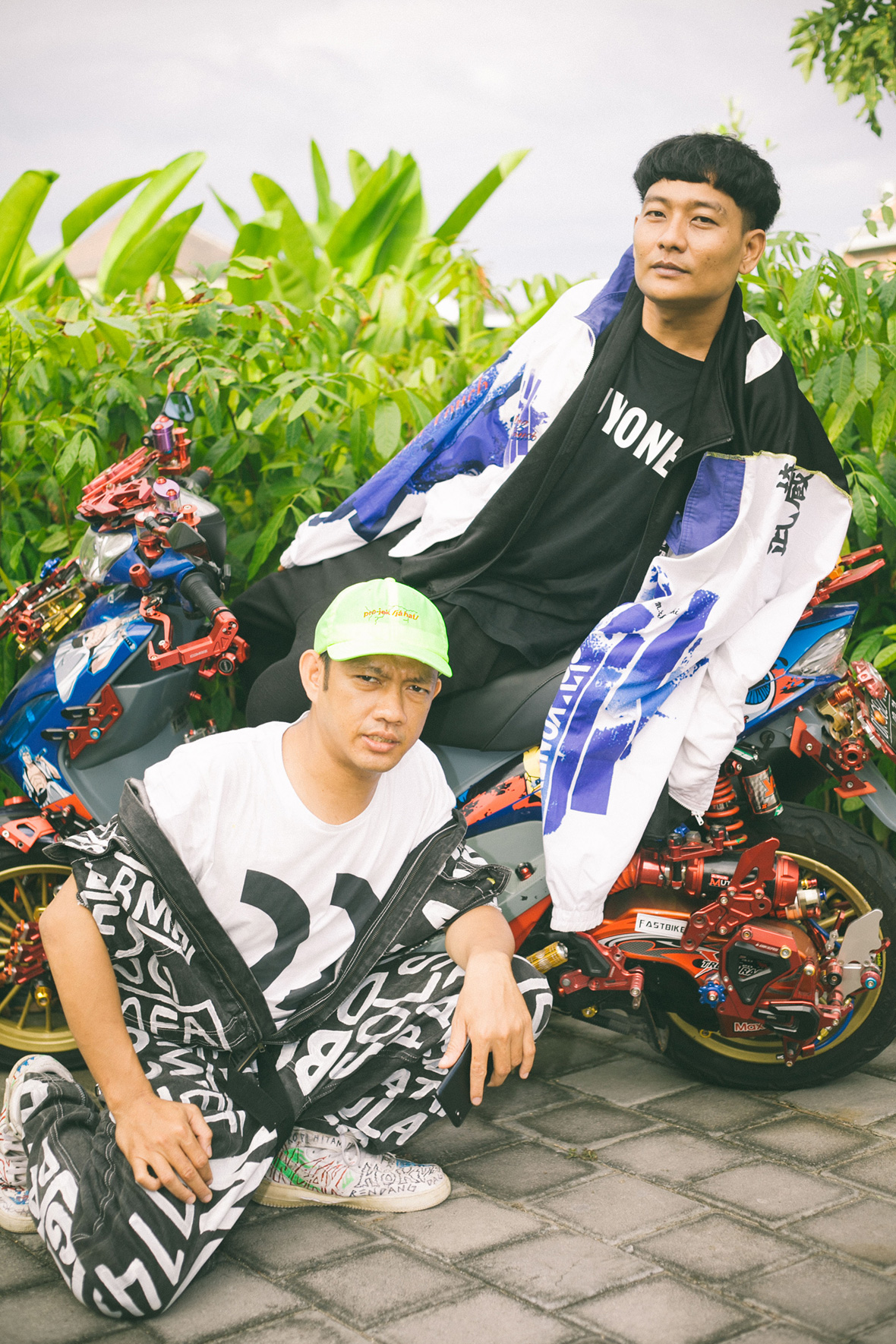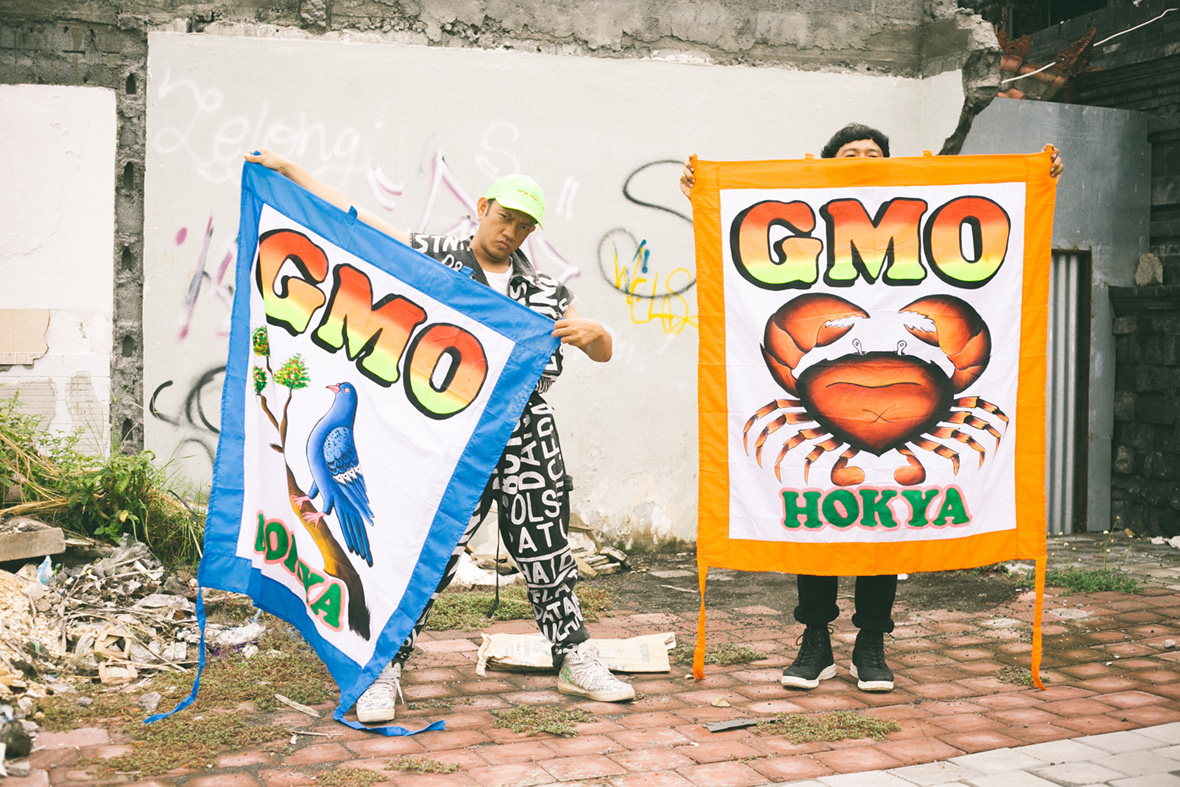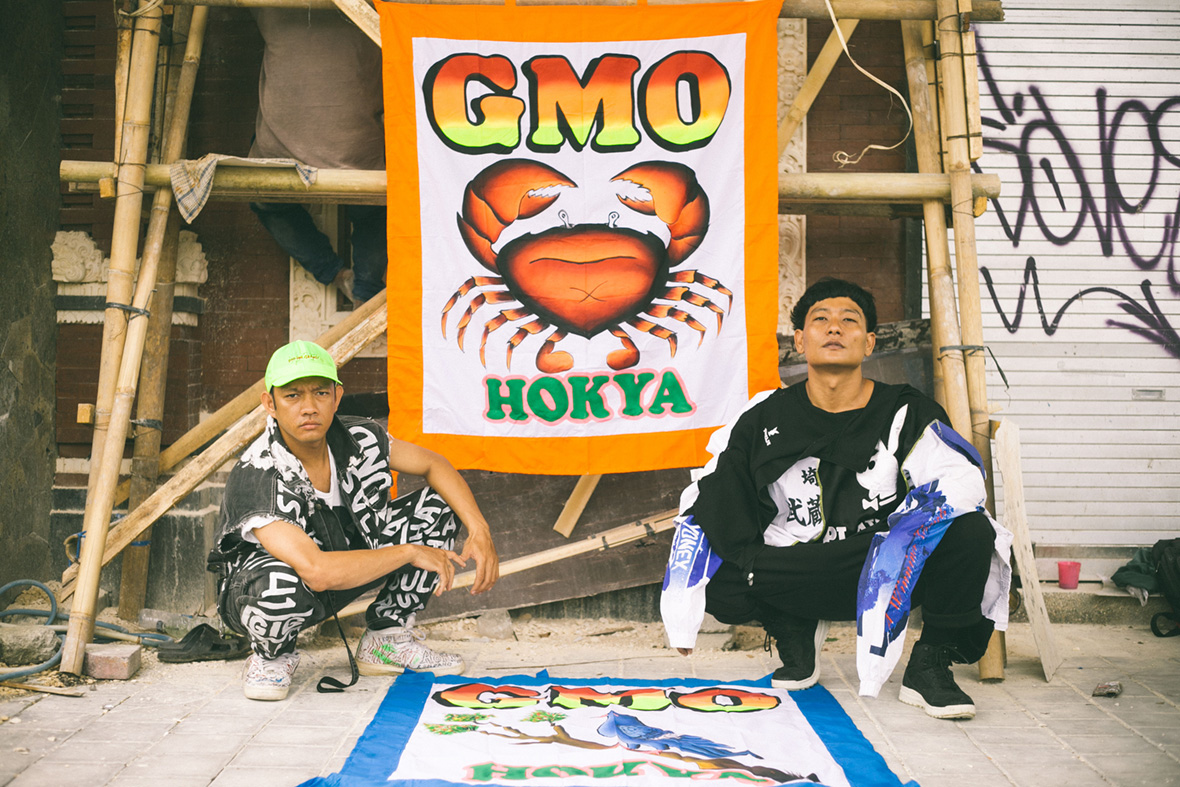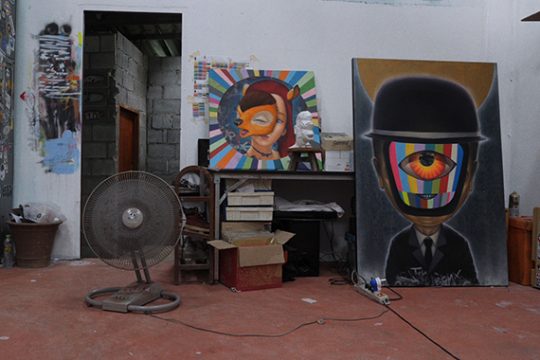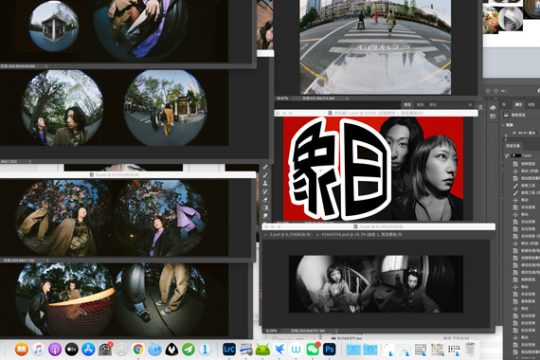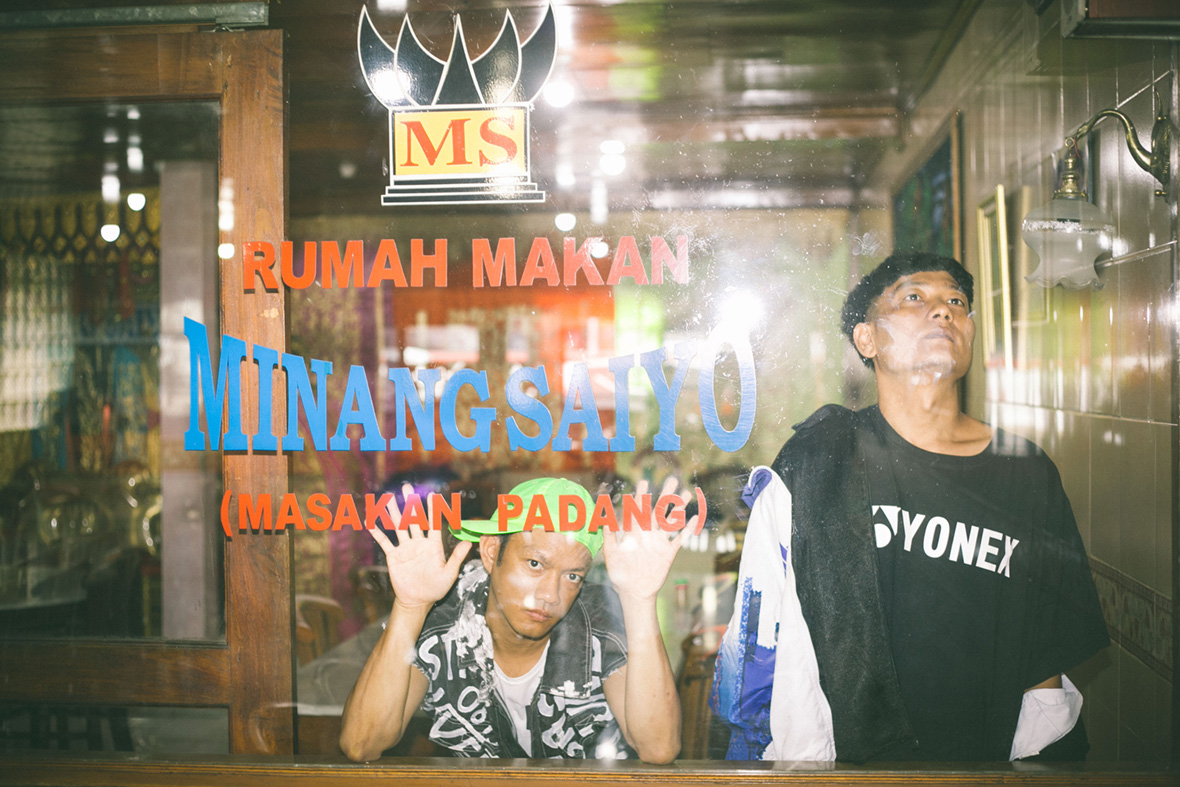
Warning: do not click play on Gabber Modus Operandi’s music until you’ve had at least one cup of coffee. This Bali-based electronic duo is proudly abrasive, pummeling audiences with a sound that’s like something drained from the sewers of death metal or the gutters of rave music. GMO’s music doesn’t fit into any category, and there’s nothing quite like their style. They constantly veer into new territories, and listeners who brave the onslaught are rewarded with fresh sound pallets and surprisingly intricate textures. There are even drums and melodies pulled from local Indonesian traditions, and the combination is seamless.
Ican Harem and Kasimyn, the duo behind Gabber Modus Operandi, are deeply engaged in Indonesia’s wealth of musical traditions. They’re inspired by everything from traditional gamelan to newer genres like penceng, a sound driven by endless solos played on cheap keyboards at frantic speeds. Harem handles the vocals, while Kasimyn takes care of production.
警告:点击播放 Gabber Modus Operandi 的音乐前,请确保你已至少喝了一杯咖啡。巴厘岛电音二人组我行我素的音乐风格,似是脱胎于地下死亡金属或锐舞(rave)音乐,为观众的耳鼓带来震撼冲击。GMO 的音乐不属任何流派分类,也很难找到与之类似的音乐风格。他们不断探索新的音乐领域,只有勇于接受他们音乐洗礼的听众,才能领略到前所未有的新颖音乐风格和出人意料的复杂层次。他们甚至糅合了印尼当地的传统音乐中的鼓乐和旋律,无缝融入到音乐创作中。
Gabber Modus Operandi 的两位成员 Ican Harem 和 Kasimyn 都对印尼大量的传统音乐有着深深的着迷。他们的创作灵感丰富多样,从传统甘美兰(gamelan)音乐到新兴音乐流派,如 penceng ——无数疯狂快节奏的键盘音乐独奏。二人中,Harem 处理人声,而 Kasimyn 则负责后期制作。
Listen to to some of our favorite tracks from Gabber Modus Operandi below:
点击即可试听 Gabber Modus Operandi 的几首歌曲:
When they’re not composing or performing, the two scour the internet looking for sounds and subcultures that are both intensely local and globally informed. “There’s a suburban culture called Alay, where they love traditional music but also street racing on motorcycles,” they explain excitedly. “They have their own language. They’re trying to be Western, but it’s mistranslated and as a result thoroughly Indonesian. So instead of customized motorcycles, we get these maximalist, improvised scooters, because that’s what’s available here.” GMO’s Instagram is full of pics showing expressions of Indonesian identity that are equal parts ingenious and absurd.

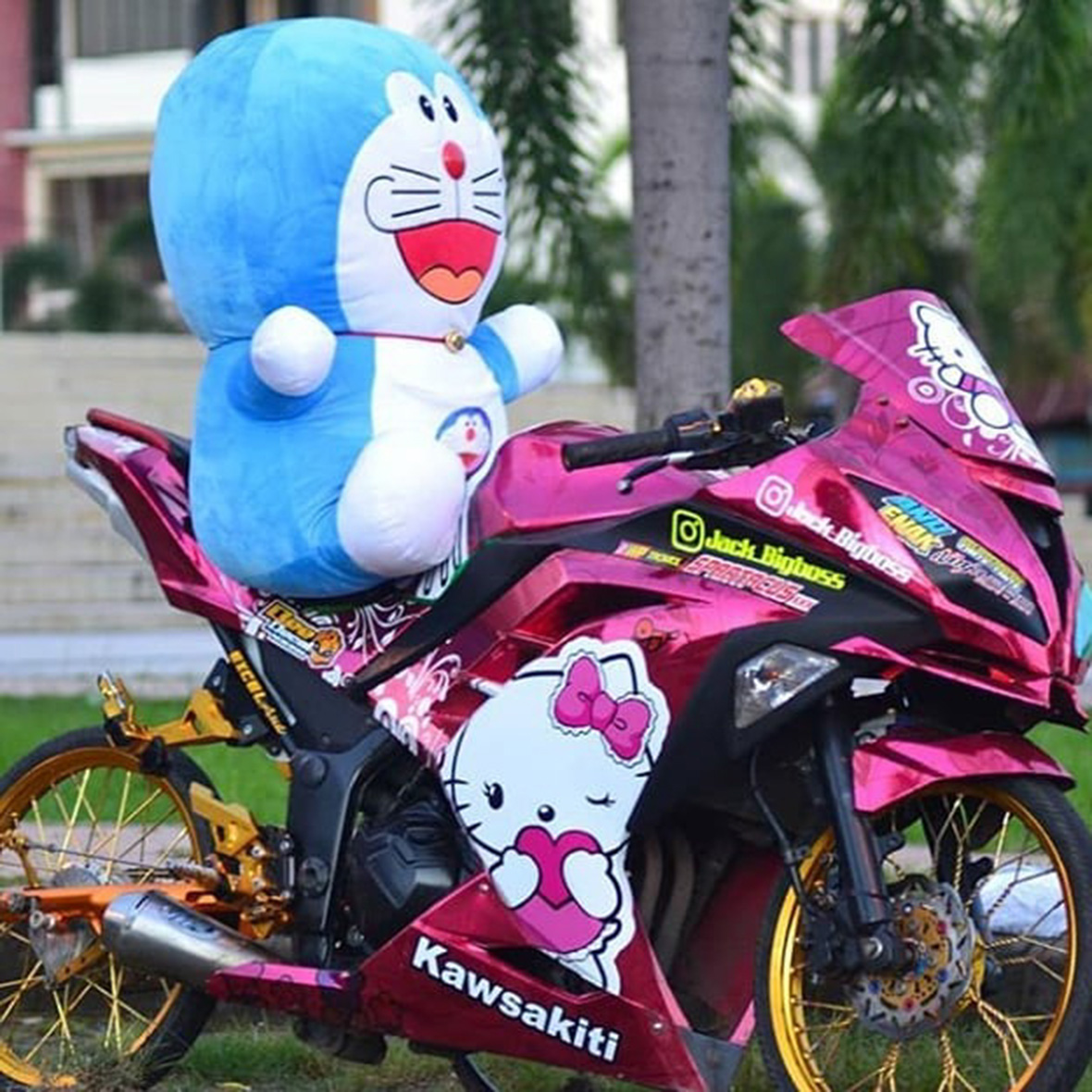

GMO’s music draws on this blend of subcultures. They mix the unrelenting drums of gabber, a style of electronic dance music popularized in the 1990s in Holland, with the mutilated vocals of heavy metal and the droning screeches of experimental noise, and to that they add the traditional melodies of gamelan, sampled from the radio or from their neighbors, and touches of a local dance music called funkot. There’s a beautiful give-and-take of roving styles, one that’s particularly suited for Indonesia, a country with a rich and diverse musical history. The result is a sound that’s all its own.
The pair stresses that there are probably other people mixing these traditions, given the thousands of islands in Indonesia, even if they’re unaware of them. Uwalmassa, a group from Jakarta, also blends gamelan with modern club music, but in a much sleeker way and with a deeper sound. Back in the 1990s, Barakatak fused West Javan music with house, while the ketipung rhythm of koplo (a regional version of live pop) introduced 4/4 time to local styles of music. And more recently, in 2010, Senyawa released rhythmic experimental music rooted in the Indonesian experience. “Senyawa really opened our minds to the idea that it’s okay to be Indonesian. It’s okay to speak our languages, it’s okay to present the dark side of things here,” they say. “We’re really only in the beta phase of DIY Indonesian music right now.”
他们的音乐借鉴了这种混合的亚文化,融合了 20 世纪 90 年代在荷兰普及的电子舞曲 gabber、重金属音乐的人声部分、实验性噪音的尖锐声音,然后再加入他们从收音机或邻居处采样的甘美兰传统旋律,以及当地的舞蹈音乐 funkot。他们的音乐充满着令人着迷的多元融合风格,也特别适合印尼,因为这是一个拥有丰富多元的音乐历史的国家。这种融合的最终成果是一种独一无二的音乐。
两人强调,可能在印尼,也有其他人在结合传统音乐创作,只是他们不知道罢了,毕竟这是一个“万岛之国”。来自雅加达的组合 Uwalmassa 在他们的音乐中同样融合了现代的俱乐部音乐和传统甘美兰音乐,但是风格更流畅、更深沉。而早在上世纪 90 年代,另一支乐队 Barakatak 就曾经混合西爪哇音乐和 House 音乐,此外,koplo 音乐也进一步推广了 4/4 拍节奏。在 2010 年,印尼实验组合 Senyawa 就曾推出充满印尼音乐特色的节奏感实验音乐。“Senyawa 的音乐让我们真正明白到,印尼风的音乐也可以很棒,印尼语也创作出好的音乐,我们是可以通过音乐来展现出印尼这个国家不那么光彩的一面的。我们现在还只能算是在 DIY 印尼音乐的试验阶段。”他们说。
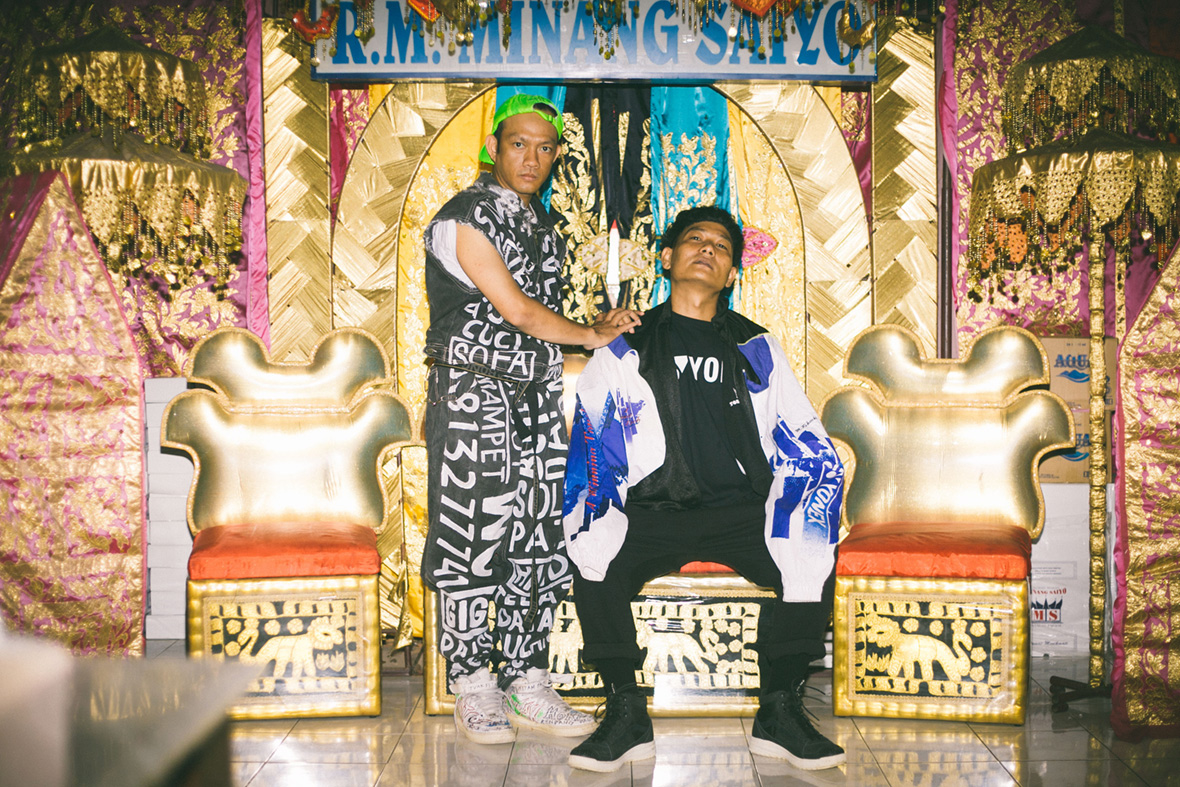
“Underground music here is all basically imported,” they explain. “When we do play out, we play to crowds that are maybe all punk rockers or mainly familiar with noise music. But these locals experimenting in the other scenes are quite different, and we’re a bit jealous. They don’t really have the funds to travel or experiment with a bunch of electronic gear, but they push the tools they have as far as they can go and have fun with it, creating something brand new. That’s what really inspires us.”
As for traditional music, they see three different attitudes in Indonesia: “One is really sacred, and it relates to the kingdom family and celebrates the idea of religion. It’s a strict set of rules. Then there’s the stuff they play for tourists, like at the airport. Elevator gamelan, basically. Then there’s a third one, the hybrid. Kids who listen to death metal but also gamelan. The last one is our favorite. The contrast makes us really happy. It’s a political identity, they’re comfortable with what they have.”
“这里的地下音乐基本上都以外国音乐为主。”他们解释说,“当我们在外面表演时,观众可能全是朋克摇滚爱好者,或大部分都是熟悉噪音音乐的。但是,有一群印尼音乐人,他们在进行自由的实验创作,我们真的特别羡慕他们。虽然他们没有太多资金去旅行或用一大堆电子音乐设备进行创作,但他们能够将手上的工具物尽其用,尽情享受过程中的乐趣,去创造出一些全新的音乐。这真的给了我们很大的鼓舞。”
至于传统音乐,他们在印尼看到有三种不同的分类:“一种是比较神圣的音乐,因为这些传统音乐会涉及到古代皇室和宗教。有一套严格的规则。第二种就是为游客演奏的传统音乐,譬如在机场的时候,基本上可以称为‘电梯甘美兰音乐’。最后,第三种就是融合风格的传统音乐。对于喜欢听死亡金属音乐又喜欢听甘美兰的人来说,最后一种是我们的最爱,不同风格的音乐之间的对比碰撞听起来很过瘾。这代表了一种政治态度,他们对自己所拥有的一切感到心满意足。”
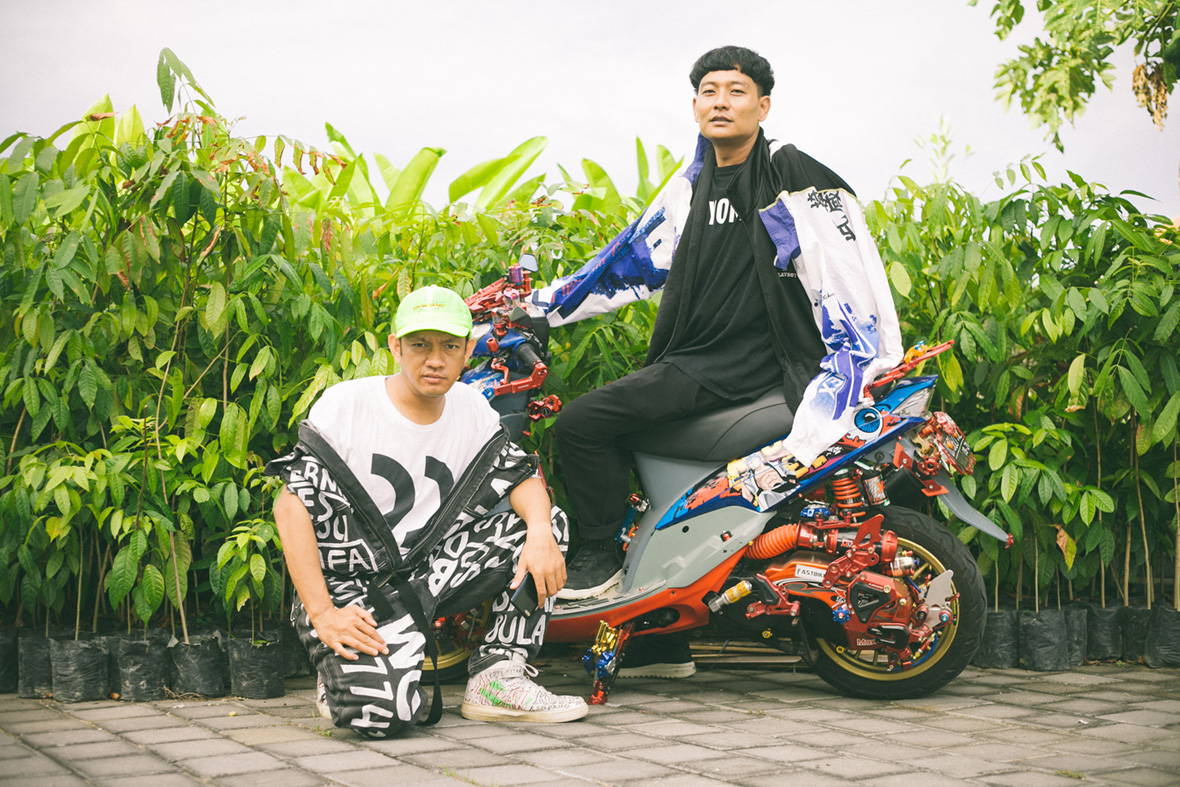
The duo manages to fit all these disparate influences into a sound that expresses their personal identity, an identity that’s angry and sarcastic, but also thoughtful and refined. Everything they write is microtuned into the pentatonic scale. And while some of their lyrics sound sacred, in one case they’re actually mimicking local street vendors who peddle snake oil. “We want to break stereotypes,” they announce proudly. “We’re dangerous and young.”
乐队的两位成员设法将这些不同的影响融合成一种能表达他们个人身份的音乐,一种充满愤怒和讽刺,同时不失思考和精致的态度。他们所创作的音乐都处理成五声音阶的“微分音”音乐。虽然他们的一些歌词带有神圣感,但有时他们实际上只是在模仿当地街头小贩兜售蛇油的叫声。“我们要打破陈规,我们是危险的年轻人。”他们自豪地宣布。
Like our stories? Follow us on Facebook and Instagram.
Instagram: @gabbermodusoperandi
Contributor: Mike Steyels
Photographer: Oktavian Adhiek Putra
Chinese Translation: Olivia Li

